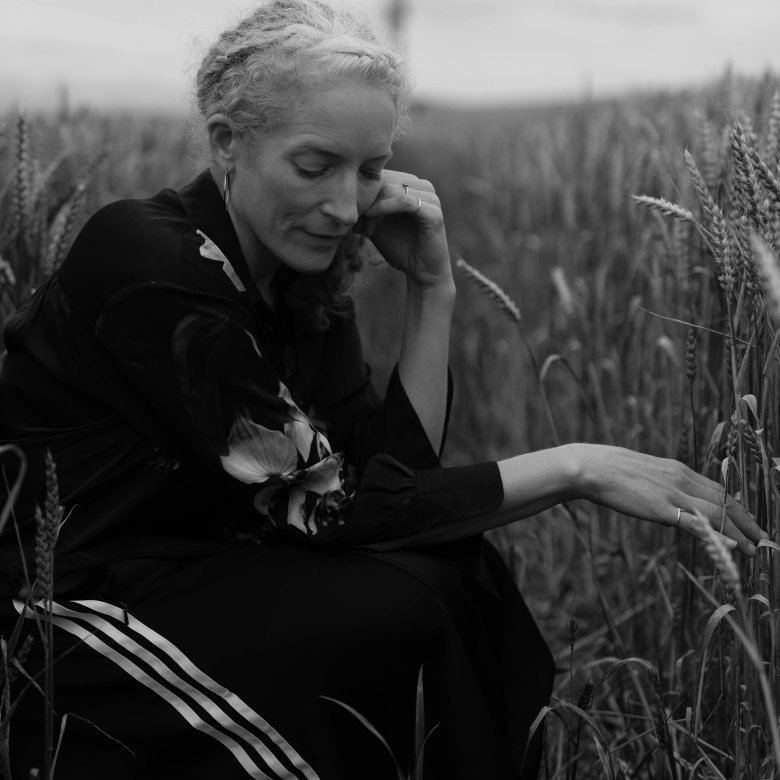Graduate Spotlight: freelance illustrator Tula Parker
19 September 2024

Tula Parker is an illustrator on a mission to explore ways in which our bodies process memories. Through her distinctive hand-drawn portraits, Tula has forged a resonant practice which was strengthened during her time studying Falmouth’s online Illustration master’s – and which she has lent to a wide range of clients, from publishing houses to yoga schools. We recently chatted to her about her work, her time on the master’s and why she values illustration as a means of human connection.
When did you first realise you were creative?
I went to Tanzania in 1997 as part of a volunteer team and stayed in two different villages. The people I met were warm, lovely and welcoming. I learnt a bit of Swahili but was struggling to remember everyone’s names, so I decided to ask if I could draw people and then ask them to write their name in my sketchbook. It was the first time I realised that drawing was something more than marks on a page, but a valuable communication tool that could create connections. I took lots of photos, but the drawings are a special kind of embodied memory; they represent the time I spent with each person.
Having worked extensively as a freelance illustrator across many projects, has there been one project that has been particularly meaningful to you?
The work I did on my Final Major Project as part of the master’s was the most meaningful for me. It is a personal project that explores memory, the impact of trauma and the possibility of repair and growth. It was based on conversations with people and using drawing to communicate their experiences. Through drawing I explore disruption, absence and how our bodies remember. The final piece is a self-published artist’s book called And the Story is Our Past, which was a lot of work, but something I am very proud of. The book format worked as a container for fragmented experiences, which felt important. Our memory creates a narrative, a story of who we are, and this helps us form connections with others. Traumatic memories are different, and they tell another story – I wanted to make space for this.
What was the most valuable thing you gained from studying illustration to master’s level?
The importance and value of research. Drawing is, for me, a research tool in itself – a way to explore, understand, test out and communicate information. When this works in parallel with further research into the subject I’m illustrating, it suggests other ways of working. For example, looking into the way traumatic memories can be fragmented was a pathway into experimenting with my visual language. It helped me develop ideas of fragmentation within my drawings and informed the decisions I made about the format and layout of my book.
What was the most surprising thing about being a part of Falmouth’s online community of illustrators?
I made good connections with people, and it really did feel like a community. Student-led sessions proved invaluable as places to share work, ideas and feedback. I found that learning online worked well, as it gave me the flexibility I needed to do the MA alongside all the other things going on in my life.
What do you love most about illustration?
I think this quote from Illustration Research Methods, by Mirielle Fauchon and Rachel Gannon, captures what I love about illustration:
Illustration’s strength lies in the ability to document outer and inner worlds, multiple perspectives and the immediately visible as well as the unseen. (Illustration Research Methods, 2021)
Illustration embodies a visual language, and this can be a powerful form of communication for both illustrator and audience. It is a way to both tell and invite stories. I adapted my MA project into an exhibition and the portraits I made were in pencil with purposefully erased sections to communicate disruption and absence. Each one had a hidden or indirect eye gaze, and areas of negative space, and I played the sound of their voices in the room, making space for the audience to witness each person, and for some people this prompted them to think about their own less comfortable memories. I had some surprising and fascinating conversations, and it made me think about the potential this has for further storytelling and sharing using an illustrative space.
What does the future hold for you and your work?
More storytelling and lots of drawing! In terms of commissioned work, I’ve just completed a short, animated piece for a music video and I’m working on an illustrated map for the Brighton Lights. Alongside this I’m continuing with my work on memory and have just started a series of 100 portraits to explore ways of drawing people. I'd like to offer portrait drawing to organisations that support people impacted by trauma and develop the approach I took in my MA; drawing as an act of listening.




